The Cornell Lab Bird Academy › Discussion Groups › Joy of Birdwatching › Activities: Bird ID Practice
-
Activity 1: It is easy to tell a hummingbird which comes to our hummingbird feeder, red-tailed hawk which hunts occasionally in our field, and blue heron by shape, all of which visit our property. Activity 2: different shades of blue, birds on our property 1. bluebird 2. blue jay 3. blue heron Activity 3: Blue heron search for food in the pond for frogs and small fish in our pond. Goldfinch search for seeds in yard. The cardinals keep returning to bird feeder area searching for seed droppings. The black vulture sailed overhead searching for road kill. Activity 4: The adult Canada geese have a long neck and big body. The neck is black, with a white band up its cheek. The feathers are brown, with white tail feathers. The pair was in a pond in a park in the National Forest. One was on a nest and the other was paddling nearby.



-
Activity 1: Evening Grosbeak- A large finch with a pale short thick bill, a dark head, yellow belly and brow, black wings with white patch and a black short notch tail. Pine Grosbeak- A large pink finch with two white wing bars and pale grey highlights, and a black stubby bill. Activity 2: Black-capped Chickadee- Tiny, plump, grey bird, black cap head and throat, white cheek and belly, short, stumpy black bill. Dark-eyed Junco- Grey all over sparrow with white belly, pinkish bills and white outer tail feathers White-breasted Nuthatch- large grey nuthatch, white face, black cap, light grey under parts, black and grey wing bars, long, narrow black beak Activity 3: Common Redpoll- feeders Blue Jays- feeders and ground beneath feeders Black-eyed Junco- ground beneath feeders Activity 4: One of my favorite birds is the Northern Hawk Owl. I am always so amazed when he flies over my car to say hi on my way to our Cabin. He is a medium sized owl with a long tail. Brown overall with white spotting on the belly and wings.
-
We spent the morning watching a Greater Blue herons and double breasted cormorants nesting in a rookery of about 50 nests. It was on an island in Stanley Lake in Westminster/Arvada Colorado. They do have nesting Bald Eagles nearby. We have seen them soaring but haven't located a nest
-
One of my favorite birds is the gold finch. He comes to a thistle feeder, especially spring, summer and fall. Or at least he is bright yellow with black on his wings during those seasons. He is about the size of a sparrow and waits in the trees before hitting the feeder. He is skittish and flies away if I get too close.

-
We have a feeder in the yard. The song sparrow perches on the feeder to eat sunflower seeds and spits a lot out and the blue jay pecks the ground under the feeder. The chickadee flies to a feeder perch, grabs a seed and flies (swooping up and down) to a tree branch nearby to eat the seed.



-
2. I chose a cardinal, a chickadee and a goldfinch—all have black on them, but the cardinal’s is a mask, the chickadee’s a cap and the gold finch has black on its wings



-


-
An easy comparison of birds by shape would be a cardinal versus a mocking bird. The cardinal’s crest is a dead give away.
-
A Downy Woodpecker has the smaller beak compared to the Hairy Woodpecker, also I noticed it going up the tree looking for insects.

-
- Thanks to Merlin photo ID, I was able to find out this was a male Purple Finch

- Thanks to Merlin photo ID, I was able to find out this was a male Purple Finch
-
Activity 1: Hairy woodpecker & mountain chickadee - not hard to differentiate! Activity 2: Mountain chickadee (gray, white & black with white eyebrow), black capped chickadee (gray, white & black with full black cap & bib), hairy woodpecker (white & black with spotting) Activity 3: Crows (walking along fences/ground), mountain chickadee (flitting around aspen branches), black capped chickadee (flitting around aspen branches) Activity 4: Hairy woodpecker (approximately smallish robin sized, spotted black & white, clinging to/picking at tree trunks, area with old growth aspens, pines, & spruces, single "peek" call)
-
 <p style="text-align: left;">Activity 1: Look for two birds you can tell apart by shape.</p>
<p style="text-align: left;">Northern Cardinal.
American Robin.</p>
<p style="text-align: left;">Activity 2: Look for three different birds that have the same colour but on different parts of their body. Red.</p>
<p style="text-align: left;">
Back of the head. Male Downy Woodpecker.
Complete body. Male Northern Cardinal.
Chevron shaped red feathers on the nape of the neck. Northern Flicker.</p>
<p style="text-align: left;">Activity 3: Searching for food.</p>
<p style="text-align: left;">
Chickadee. Takes a seed from the feeder then flies into the burning bush or forsythia to eat it completely before returning to the feeder for another seed.
White-breasted Nuthatch. Comes to the feeder, takes a seed and flies over to the white oak or the red oak to store it or eat it.
White-throated Sparrow forages under the feeder and double scratches through the seeds on the ground. It never flies up to perch and eat on the feeder.</p>
<p style="text-align: left;">Activity 4: Describe your favourite bird.</p>
<p style="text-align: left;">The Northern Cardinal is too easy to identify, but it is a favourite to watch, especially when the male feeds the female. So I will describe a bird I found on a walk in the park that I had never seen before.The park is located on the shore of a lake. It was late in the day, about 5:30 and the sun was going down so the light wasn’t the best. A bird flew into a tree ahead. It had a long tail, a long pointy bill, 2 wing bars and some white patches on its wing. It was about the size of a Robin, but more slender in build. It did not sing. I took photographs of it in the waning light. I found it in my guide book. A Northern Mockingbird.</p>
<p style="text-align: left;">Activity 1: Look for two birds you can tell apart by shape.</p>
<p style="text-align: left;">Northern Cardinal.
American Robin.</p>
<p style="text-align: left;">Activity 2: Look for three different birds that have the same colour but on different parts of their body. Red.</p>
<p style="text-align: left;">
Back of the head. Male Downy Woodpecker.
Complete body. Male Northern Cardinal.
Chevron shaped red feathers on the nape of the neck. Northern Flicker.</p>
<p style="text-align: left;">Activity 3: Searching for food.</p>
<p style="text-align: left;">
Chickadee. Takes a seed from the feeder then flies into the burning bush or forsythia to eat it completely before returning to the feeder for another seed.
White-breasted Nuthatch. Comes to the feeder, takes a seed and flies over to the white oak or the red oak to store it or eat it.
White-throated Sparrow forages under the feeder and double scratches through the seeds on the ground. It never flies up to perch and eat on the feeder.</p>
<p style="text-align: left;">Activity 4: Describe your favourite bird.</p>
<p style="text-align: left;">The Northern Cardinal is too easy to identify, but it is a favourite to watch, especially when the male feeds the female. So I will describe a bird I found on a walk in the park that I had never seen before.The park is located on the shore of a lake. It was late in the day, about 5:30 and the sun was going down so the light wasn’t the best. A bird flew into a tree ahead. It had a long tail, a long pointy bill, 2 wing bars and some white patches on its wing. It was about the size of a Robin, but more slender in build. It did not sing. I took photographs of it in the waning light. I found it in my guide book. A Northern Mockingbird.</p> -
-
#2


 Belted Kingfisher, Tree Swallow,and Bluejay
Belted Kingfisher, Tree Swallow,and Bluejay -
Baltimore Oriole
 House Finch
House Finch
-
Activity 4: I don't know if it's my favorite bird, but the bushtit is one bird I had a hard time identifying just by color/pattern. They are very plain and gray. It took several sightings in different places before I realized what they were. Now I can recognize them mostly by sound, size, and behavior. They make a high pitched almost constant chirping sound. They are very small and kind of round. They flit about very quickly from tree to tree or bush to bush. They often hang upside down from branches. They usually travel in groups and move from one side of the yard or park to the other, following each other. I live near Sacramento, CA.

-
1. Tufted Titmouse—small, has tuft on top of its head Mourning Dove—small head relative to body 2. Downy Woodpecker—black stripes on head, black wings with white stripes; red spot/line on back of head; white belly Northern Flicker—black stripe on cheek, black half moon on chest, black dots on chest, small black lines on back/wings; red line across back of neck/head; whitish/brownish chest Pileated Woodpecker—black wings, chest, tail; black and white stripes on face; top of head entirely red 3. Carolina Chickadee—flies to feeder, picks up one seed, takes it to tree and eats it, returns to feeder Mourning Dove—searches ground underneath feeder for dropped seeds American Goldfinch—hangs upright or sideways on thistle seed feeder 4. Eastern Bluebird
- Blue head, wings, tail; reddish brown chest, white belly
- Size is slightly larger than a sparrow; full, rounded belly
- Not aggressive; politely waits for its turn at the feeder. Can be chased away by more aggressive birds.
-
 #1 - Northern Cardinal and Black-capped Chickadee
#2 - 3 birds with similar colour (black/white) but in different body areas - Black-capped Chickadee, White breasted Nuthatch, Downy Woodpecker
#3 - Chickadees flit rapidly on and off feeder and chase each other off. Nuthatch moves quickly down tree trunk, head first and is head-down on the feeder. Woodpecker settles on suet block for 5 minutes or so at a time and feeds from multiple angles
#4 - White breasted nuthatch - size and shape similar to chickadee, no black throat or eyestripe, head down on tree trunk or feeder
#1 - Northern Cardinal and Black-capped Chickadee
#2 - 3 birds with similar colour (black/white) but in different body areas - Black-capped Chickadee, White breasted Nuthatch, Downy Woodpecker
#3 - Chickadees flit rapidly on and off feeder and chase each other off. Nuthatch moves quickly down tree trunk, head first and is head-down on the feeder. Woodpecker settles on suet block for 5 minutes or so at a time and feeds from multiple angles
#4 - White breasted nuthatch - size and shape similar to chickadee, no black throat or eyestripe, head down on tree trunk or feeder -
Activity 1:
- Cardinal - has crest, long tail, large thick bill
- Carolina Wren - small, round, stout, thin curved bill, long tail that is often pointing up
- Downy Woodpecker - small red spot on back of head, white stripe down back, black wings with white spots, black and white stripes on face, white belly
- Red Headed Woodpecker - completely red head white belly, white and black patched wings and back
- Red Bellied Woodpecker - black and white striped back and wings, red neck stripe continues over head, white belly except for small slight red patch
- White throated sparrow - scratching ground for food
- Northern flicker - probing ground with bill
- Eastern Phoebe - sallying for insects from perch
- Small bird, white breast, black capped, gray back/wings with black tips/highlights
- Moves along trunk and branches of tree probing bark for food
- Makes a squeaking almost honking type call; sounds kind of like a squeaker toy
-
Activity 1:
- Canada Goose
- Blue Heron
- Mallard
- Bufflehead
- Northern Shoveler
- American Crow: used their beaks to push away detritus
- Mallard: dipped heads under water and tail feathers in the air
- Bald Eagle: perched in tree with bare branches over water
- Bufflehead: pair swimming together in a still stream in a wetland, black & white, smaller than a Mallard
-
1. Using the Cornell bird cam, I saw some Goldfinches identified by their bright yellow bodies, black wings with white stripes, and short necks and bills. I also saw a hairy woodpecker, with its much longer body, very long bill, red spot on its crown, and distinctive black and white stripes on the face. 2. Red: California towhee - has a splash of rust red on its rump, housefinch - has brighter red on head and breast, red-winged blackbird- bright red stripe on wings 3. skipping for now as it's dark out 4. Favorite bird - the Oak Titmouse. In the smallest size category. Grey almost all over. Has a very short bill and distinctive crest. Tends to dwell in oak woodlands. Short, raspy call.
-
- Activity 1: Blue Jay vs. Downy Woodpecker- the Woodpecker is much smaller in size, the Blue Jay has a crest and much larger beak and legs.
- Activity 2: Colors (black, grey, brown)1. Chickadee- black capped with white cheeks, black throat, brown belly, short stubby bill, large head 2. Red-breasted nuthatch- black head with white stripe above eye, white throat, brown/orange chest and belly 3. White-breasted nuthatch- White face black cap, blue-grey wings and back. Small spot of brown/orange on belly and undertail.
- Activity 3:1. Downy Woodpecker- Went to trees and suet cakes, flew back to tree, scaled and came back. They have interrupted flight with gliding. 2. Male Northern Cardinal- Goes to the feeder for seeds or will go to the ground and will peck. Will stay on the branches near the feeder and will look for the opportunity to get on. 3. Junco – Generally come in groups. Some will be on the ground and others will go to the feeder. They scratch with both feet but I have also seen them just peck a the ground. Will be very territorial on the feeder and chase other birds, including their own flock off.
- Activity 4: One of my favorites is a black-capped chickadee.- Size: larger than a finch, smaller than a robin - Shape: round body and head, short neck, very small beak - Color: black head with white cheeks and back of neck, brown chest and belly, grey and white back and wings - Habitat: northern united states, southern part of Canada through Alaska - Sounds: “chick a dee-dee-dee-dee” very high pitch squeaky voice, raspy at the end
-
- Activity 1:
- Bluejay - Summer Tanager
- Activity 2:
- House Finch - Northern Cardinal
- Chickadee - Black and White Warbler
- Pine Warbler - Goldfinch
- Activity 3:
- Pine Warbler hopping from tree branch to tree branch
- Red-bellied Woodpecker hopping from tree branch to tree branch
- Bluejay took the easy way to find food by gathering nuts from the bird feeder
- Activity 4:
- Belted Kingfisher
- Habitat
- Sound
- Color pattern and markings
- Belted Kingfisher
- Activity 1:
-
Activity 2: An Anhinga, a Neotropic Cormorant and a Double Crested Cormorant are all birds that have black, white and yellow. The neotropic cormorant is the smallest of the three. The neotropic and double crested cormorants both have hooked beaks and can be told apart by the size and also the details of the orange-yellow skin around the bill and chin. The double crested cormorant has some orange-yellow skin in front of the eye and above the upper bill that is prominent and mush easier to notice than the very small amount that the neotropic cormorant has. The neotropic cormorant has a thin white line around the orange-yellow skin around the chin that looks like a forward titled V. The double crested cormorant does not have this thin line of white feathers. Both the neotropic and the double crested cormorant have blueish eyes during the breeding season, both birds are low diving fish hunters. The Anhinga has a lot more white on the wings and a straight bill that it uses to skewer prey. It hunts by staying submerged in water with the neck out of the water. All of these birds stand with their wings spread out to dry after a dive in the water. Neotropic Cormorant.

-
 Enjoyed watching the Ontario bird cam! So I'm a very new inexperienced birder....but I think this is a male pine grosbeak...?
Enjoyed watching the Ontario bird cam! So I'm a very new inexperienced birder....but I think this is a male pine grosbeak...?
Read More:
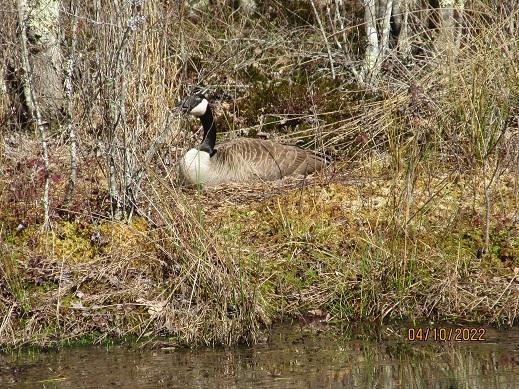
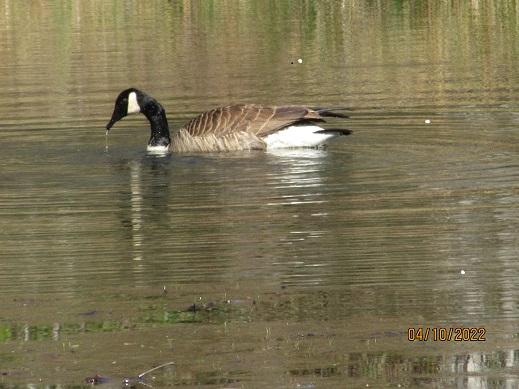
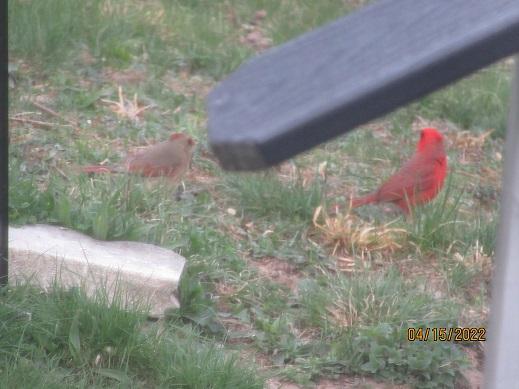
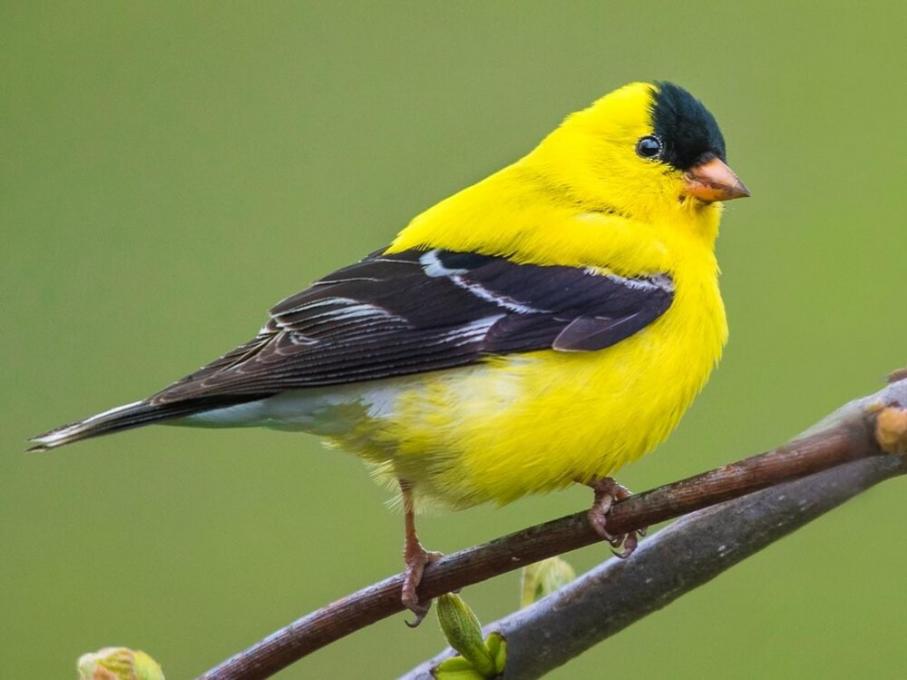
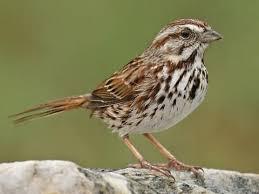

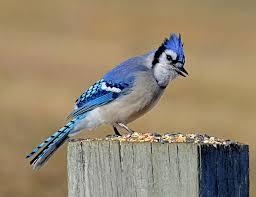
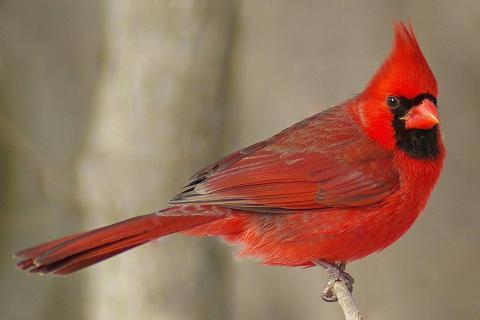

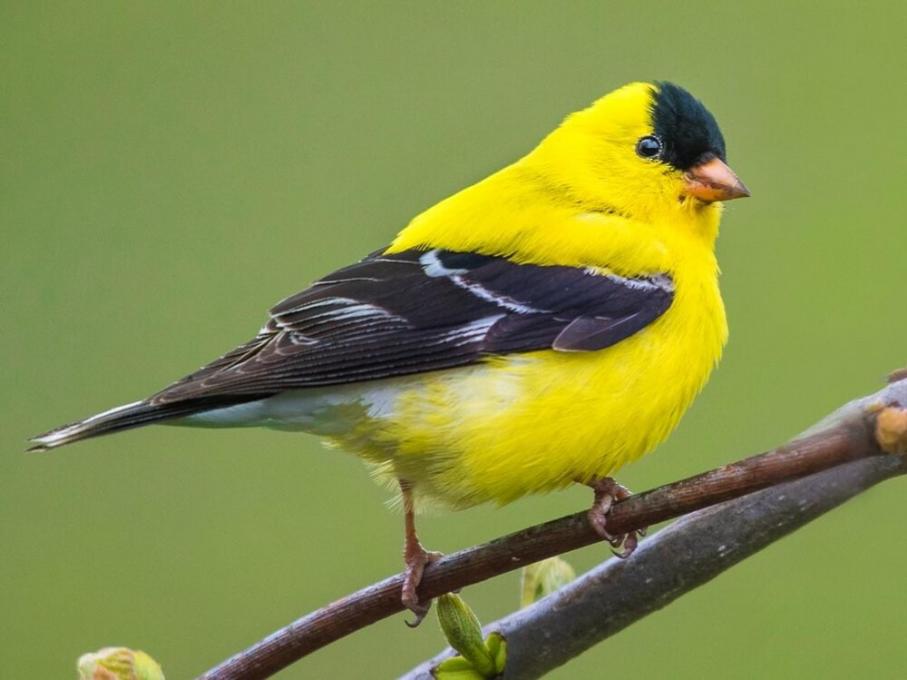
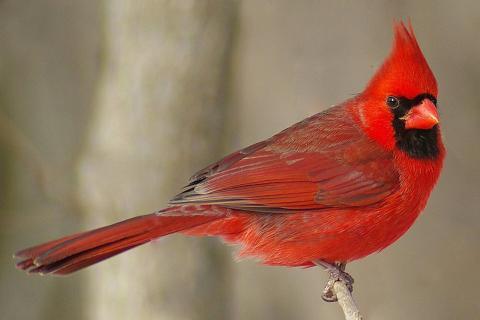
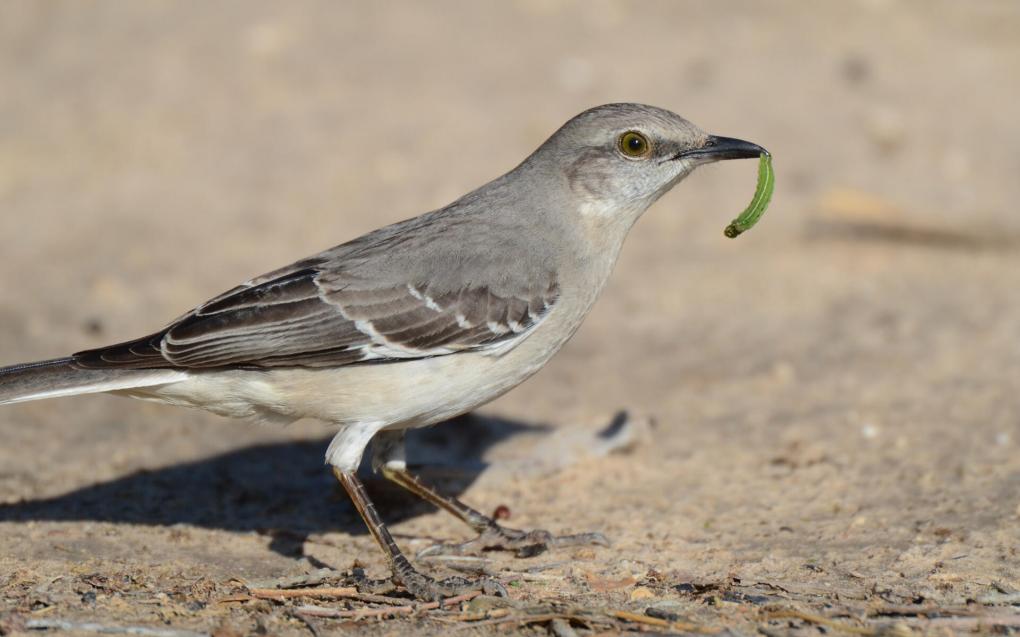
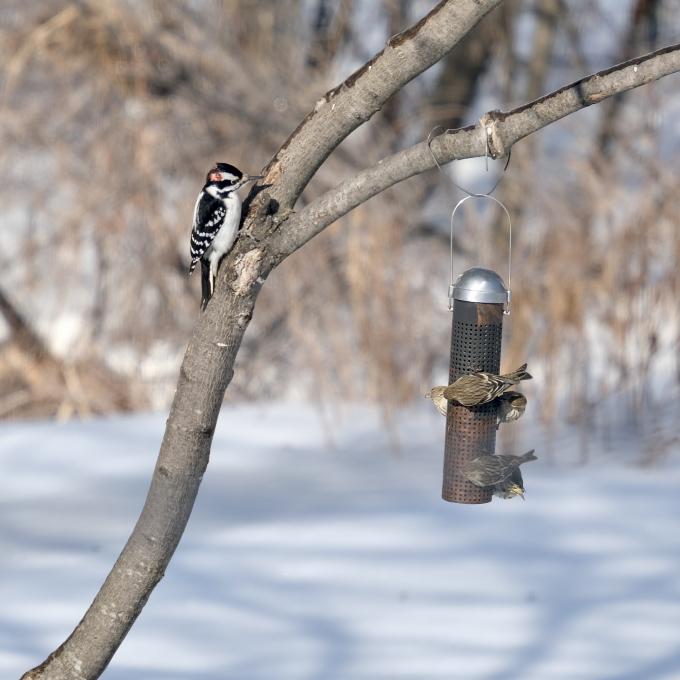
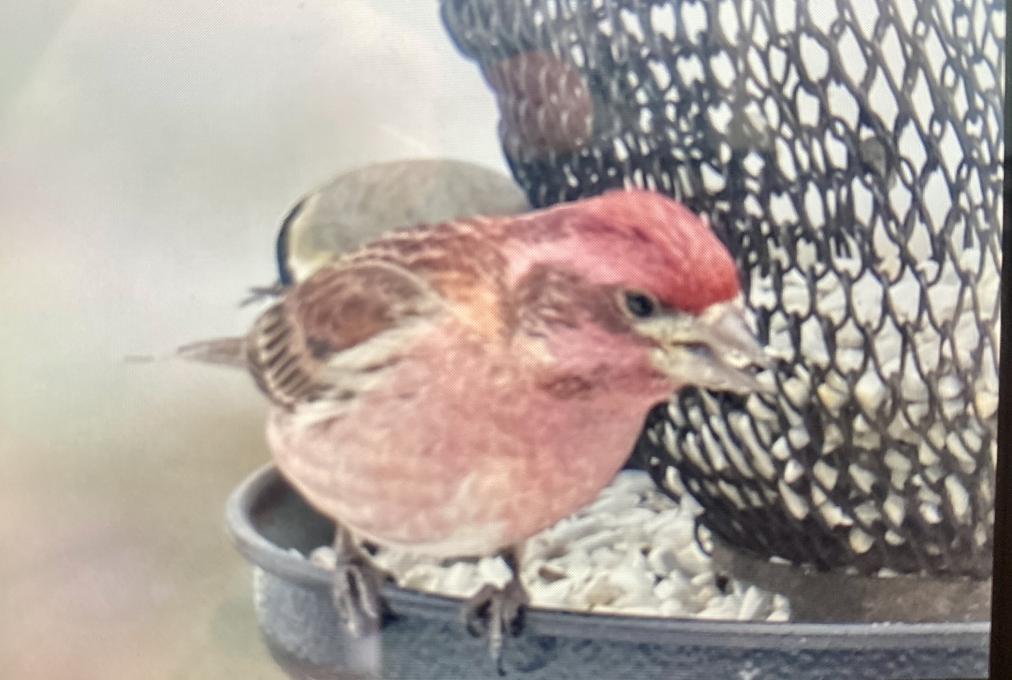
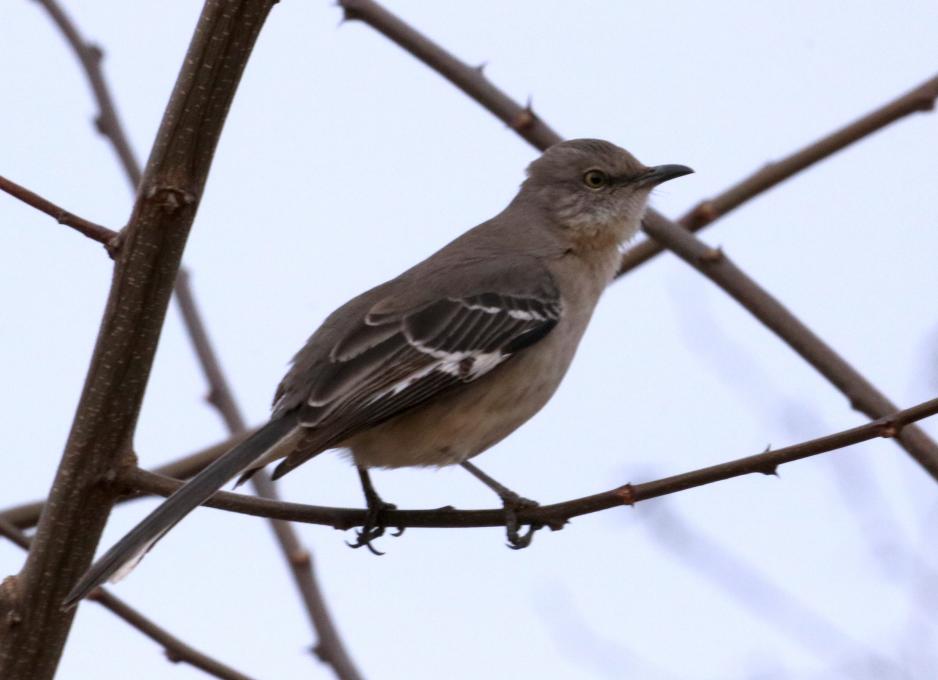 <p style="text-align: left;">Activity 1: Look for two birds you can tell apart by shape.</p>
<p style="text-align: left;">Northern Cardinal.
American Robin.</p>
<p style="text-align: left;">Activity 2: Look for three different birds that have the same colour but on different parts of their body. Red.</p>
<p style="text-align: left;">
Back of the head. Male Downy Woodpecker.
Complete body. Male Northern Cardinal.
Chevron shaped red feathers on the nape of the neck. Northern Flicker.</p>
<p style="text-align: left;">Activity 3: Searching for food.</p>
<p style="text-align: left;">
Chickadee. Takes a seed from the feeder then flies into the burning bush or forsythia to eat it completely before returning to the feeder for another seed.
White-breasted Nuthatch. Comes to the feeder, takes a seed and flies over to the white oak or the red oak to store it or eat it.
White-throated Sparrow forages under the feeder and double scratches through the seeds on the ground. It never flies up to perch and eat on the feeder.</p>
<p style="text-align: left;">Activity 4: Describe your favourite bird.</p>
<p style="text-align: left;">The Northern Cardinal is too easy to identify, but it is a favourite to watch, especially when the male feeds the female. So I will describe a bird I found on a walk in the park that I had never seen before.The park is located on the shore of a lake. It was late in the day, about 5:30 and the sun was going down so the light wasn’t the best. A bird flew into a tree ahead. It had a long tail, a long pointy bill, 2 wing bars and some white patches on its wing. It was about the size of a Robin, but more slender in build. It did not sing. I took photographs of it in the waning light. I found it in my guide book. A Northern Mockingbird.</p>
<p style="text-align: left;">Activity 1: Look for two birds you can tell apart by shape.</p>
<p style="text-align: left;">Northern Cardinal.
American Robin.</p>
<p style="text-align: left;">Activity 2: Look for three different birds that have the same colour but on different parts of their body. Red.</p>
<p style="text-align: left;">
Back of the head. Male Downy Woodpecker.
Complete body. Male Northern Cardinal.
Chevron shaped red feathers on the nape of the neck. Northern Flicker.</p>
<p style="text-align: left;">Activity 3: Searching for food.</p>
<p style="text-align: left;">
Chickadee. Takes a seed from the feeder then flies into the burning bush or forsythia to eat it completely before returning to the feeder for another seed.
White-breasted Nuthatch. Comes to the feeder, takes a seed and flies over to the white oak or the red oak to store it or eat it.
White-throated Sparrow forages under the feeder and double scratches through the seeds on the ground. It never flies up to perch and eat on the feeder.</p>
<p style="text-align: left;">Activity 4: Describe your favourite bird.</p>
<p style="text-align: left;">The Northern Cardinal is too easy to identify, but it is a favourite to watch, especially when the male feeds the female. So I will describe a bird I found on a walk in the park that I had never seen before.The park is located on the shore of a lake. It was late in the day, about 5:30 and the sun was going down so the light wasn’t the best. A bird flew into a tree ahead. It had a long tail, a long pointy bill, 2 wing bars and some white patches on its wing. It was about the size of a Robin, but more slender in build. It did not sing. I took photographs of it in the waning light. I found it in my guide book. A Northern Mockingbird.</p> 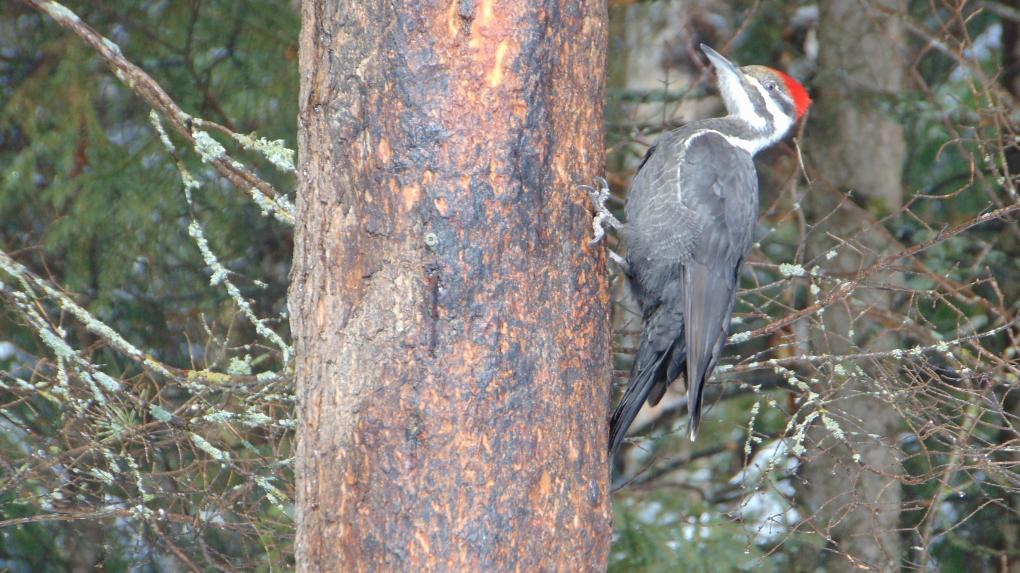
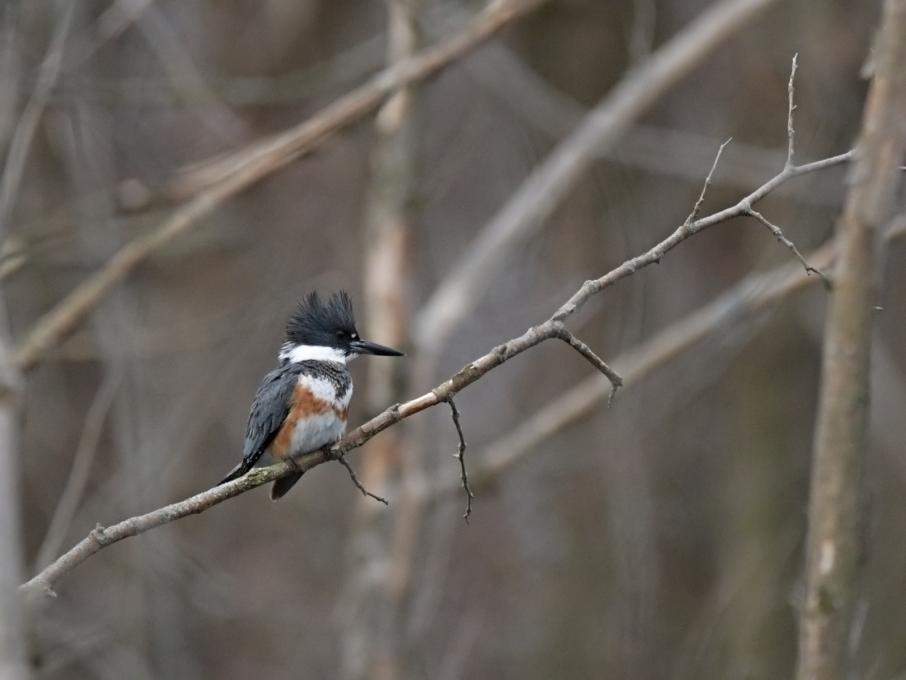
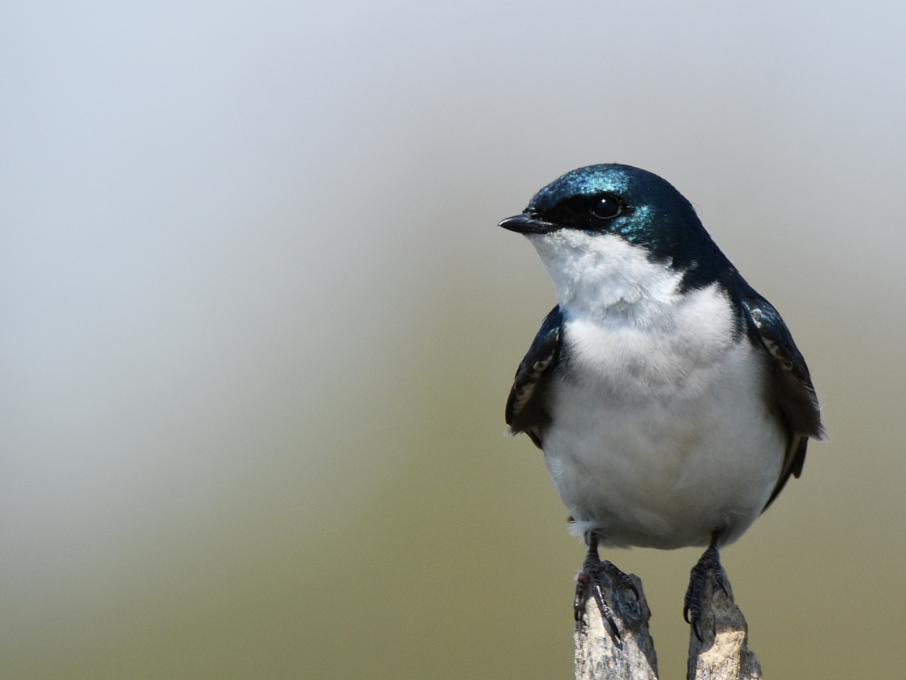
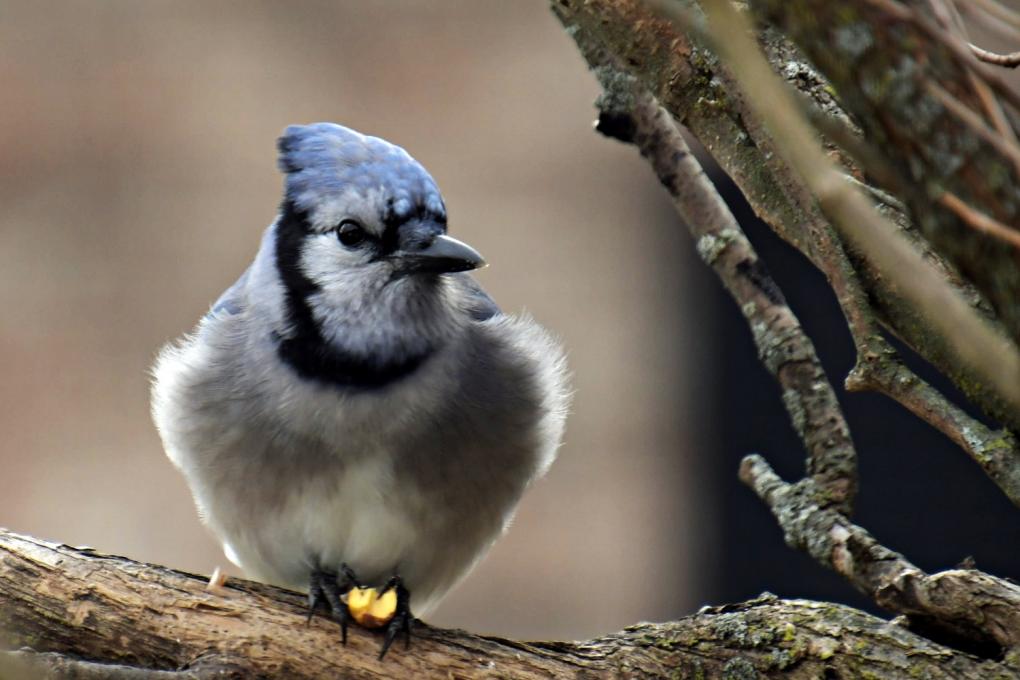 Belted Kingfisher, Tree Swallow,and Bluejay
Belted Kingfisher, Tree Swallow,and Bluejay 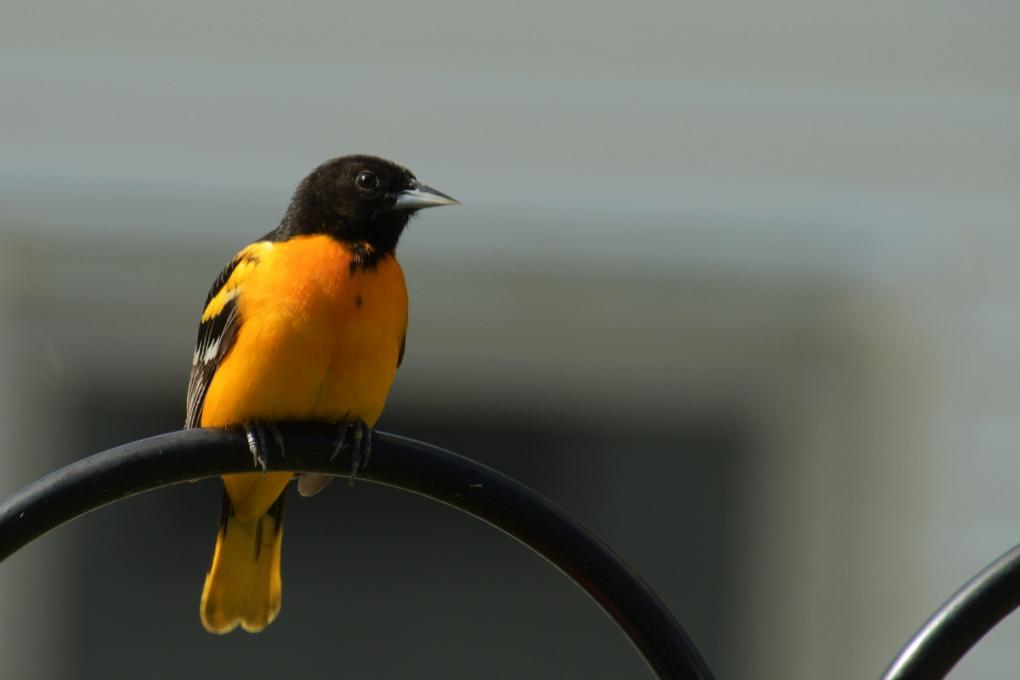 House Finch
House Finch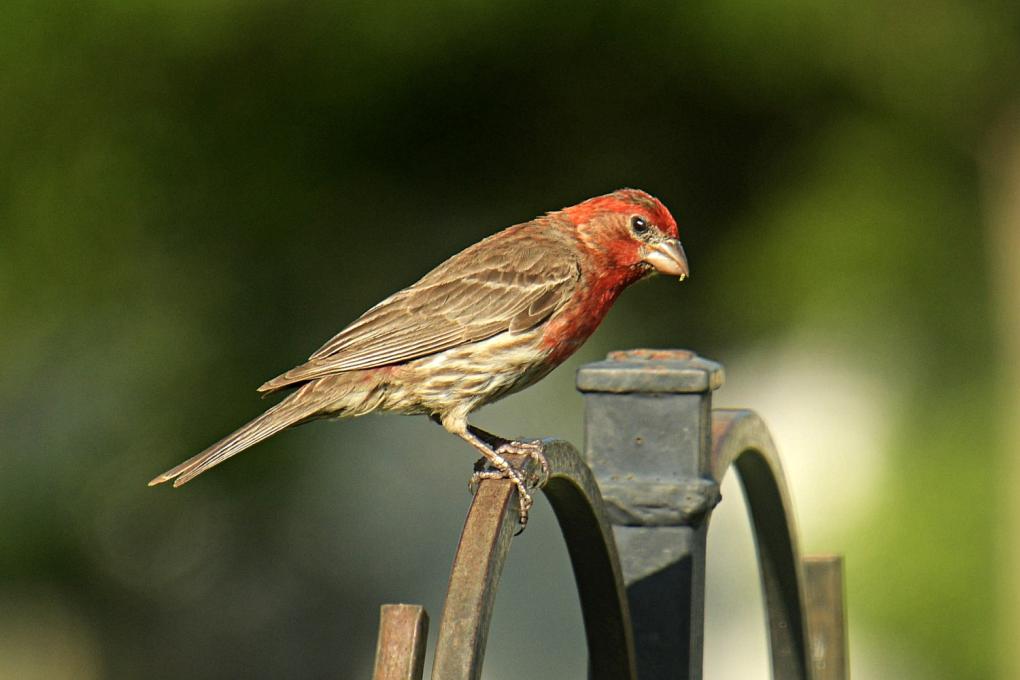
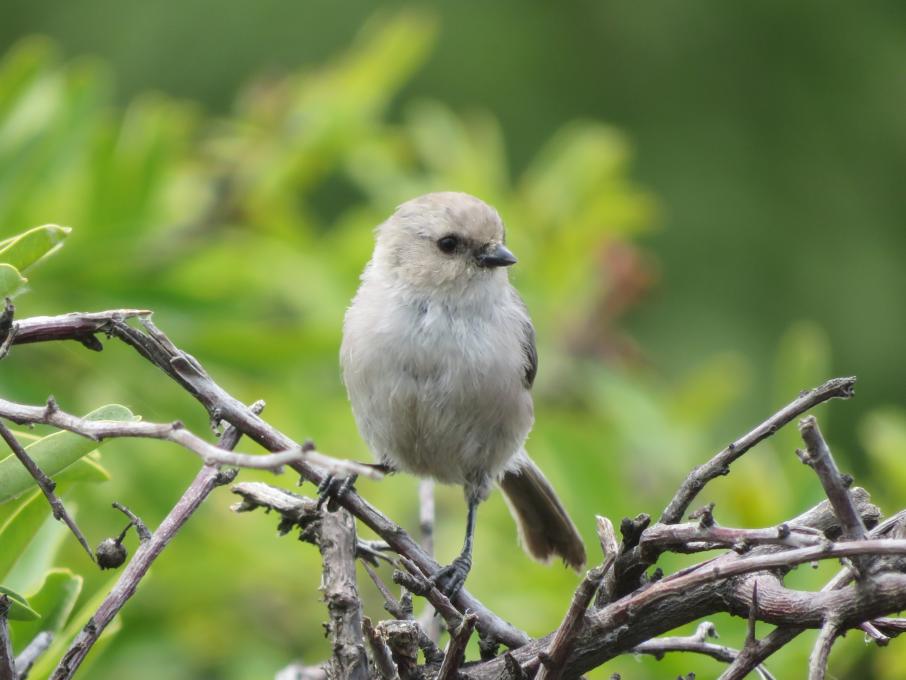
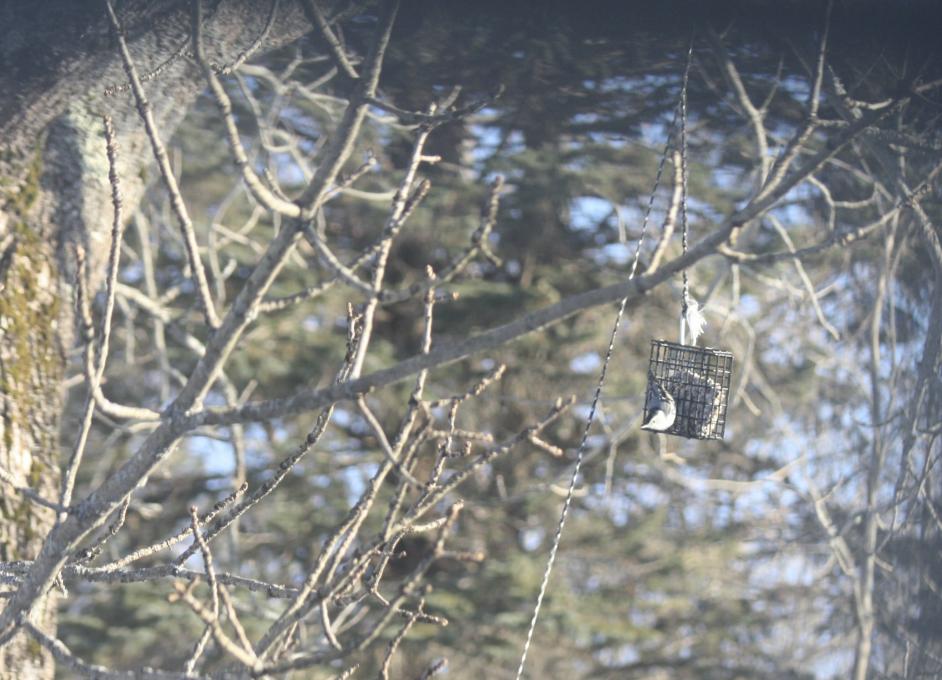 #1 - Northern Cardinal and Black-capped Chickadee
#2 - 3 birds with similar colour (black/white) but in different body areas - Black-capped Chickadee, White breasted Nuthatch, Downy Woodpecker
#3 - Chickadees flit rapidly on and off feeder and chase each other off. Nuthatch moves quickly down tree trunk, head first and is head-down on the feeder. Woodpecker settles on suet block for 5 minutes or so at a time and feeds from multiple angles
#4 - White breasted nuthatch - size and shape similar to chickadee, no black throat or eyestripe, head down on tree trunk or feeder
#1 - Northern Cardinal and Black-capped Chickadee
#2 - 3 birds with similar colour (black/white) but in different body areas - Black-capped Chickadee, White breasted Nuthatch, Downy Woodpecker
#3 - Chickadees flit rapidly on and off feeder and chase each other off. Nuthatch moves quickly down tree trunk, head first and is head-down on the feeder. Woodpecker settles on suet block for 5 minutes or so at a time and feeds from multiple angles
#4 - White breasted nuthatch - size and shape similar to chickadee, no black throat or eyestripe, head down on tree trunk or feeder 
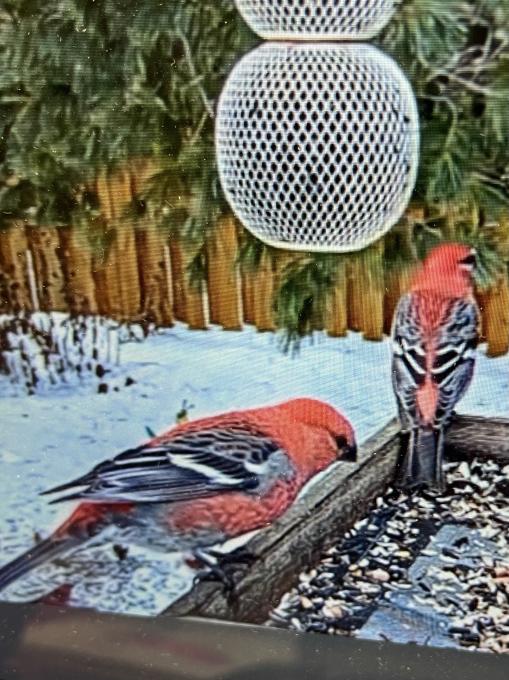 Enjoyed watching the Ontario bird cam! So I'm a very new inexperienced birder....but I think this is a male pine grosbeak...?
Enjoyed watching the Ontario bird cam! So I'm a very new inexperienced birder....but I think this is a male pine grosbeak...?